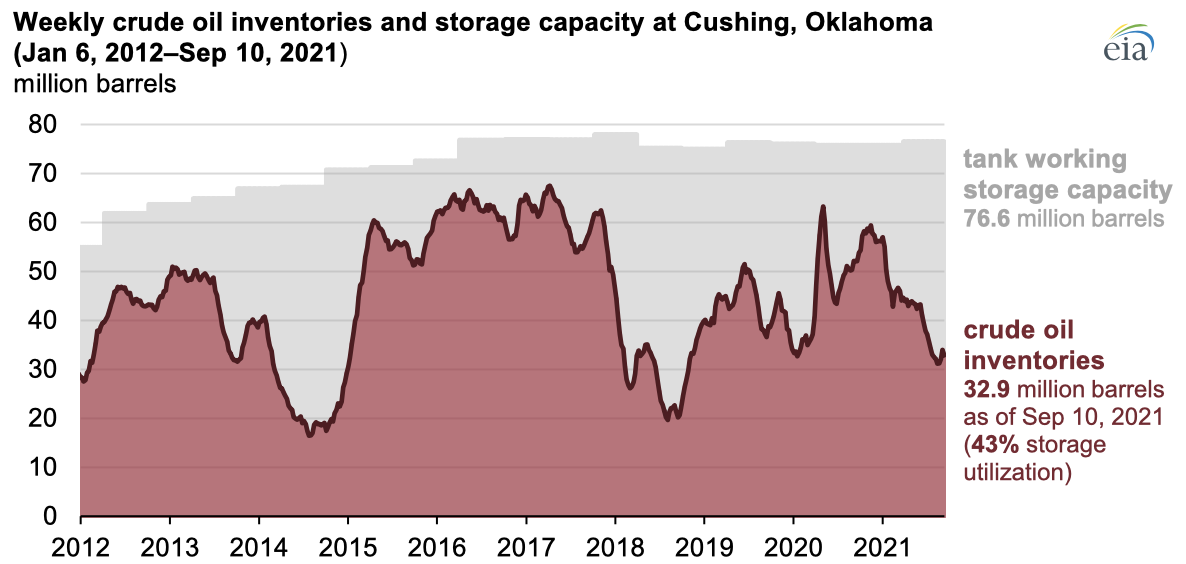Crude oil inventories in Cushing, Oklahoma, totaled 32.9 million barrels (excluding pipeline fill and stocks in transit by water and rail) in the week ending September 10, which is a 42% decrease since the beginning of the year. Crude oil inventories at Cushing are now 26% lower than normal, based on the previous five-year (2016–2020) average for that time of year. The Cushing storage hub is the crude oil delivery point for the NYMEX West Texas Intermediate (WTI) crude oil futures contract and is home to 14% of U.S. commercial tank and underground crude oil working storage capacity.

The storage withdrawals in Cushing are consistent with high crude oil inventory withdrawals elsewhere in the United States and globally in recent months. According to our latest Petroleum Supply Monthly, the decline of 35 million barrels (the equivalent of 1.2 million barrels per day) in June 2021 was the largest decline in U.S. crude oil inventory (including crude oil held in the Strategic Petroleum Reserve) since we began collecting this data in 1981. In general, inventories tend to decline when consumption exceeds production.
The 32.9 million barrels of crude oil in inventory on September 10 means Cushing had a storage capacity utilization of 43%. Before this year's decline in inventories, the most recent time that Cushing storage utilization had fallen that low was in late 2018, following disruptions on the Keystone Pipeline system (which extends from Canada through Cushing to export terminals on the Texas Gulf Coast) and after the Diamond Pipeline system (which runs from Cushing to Memphis, Tennessee) entered service.
Since April 2020, we have published U.S. crude oil inventory as a percentage of working U.S. storage capacity to calculate storage capacity utilization. To estimate current working storage capacity utilization, we compare weekly reported crude oil inventories with the latest available monthly refinery and tank farm storage capacity. The reported crude oil inventories exclude pipeline fill and estimated barrels in transit by tanker ship, barge, rail, or truck. These exclusions total 2.5 million barrels at Cushing in our latest estimate.
We base storage capacity utilization estimates on the ratio of reported inventories to working storage capacity, which we define as the difference in volume between the maximum safe fill capacity and the quantity below which pump suction is ineffective. Based on our latest Working and Net Available Shell Storage Capacity Report, Cushing has a storage capacity of 76.6 million barrels.
Principal contributor: Jeff Barron

Follow us on social media: